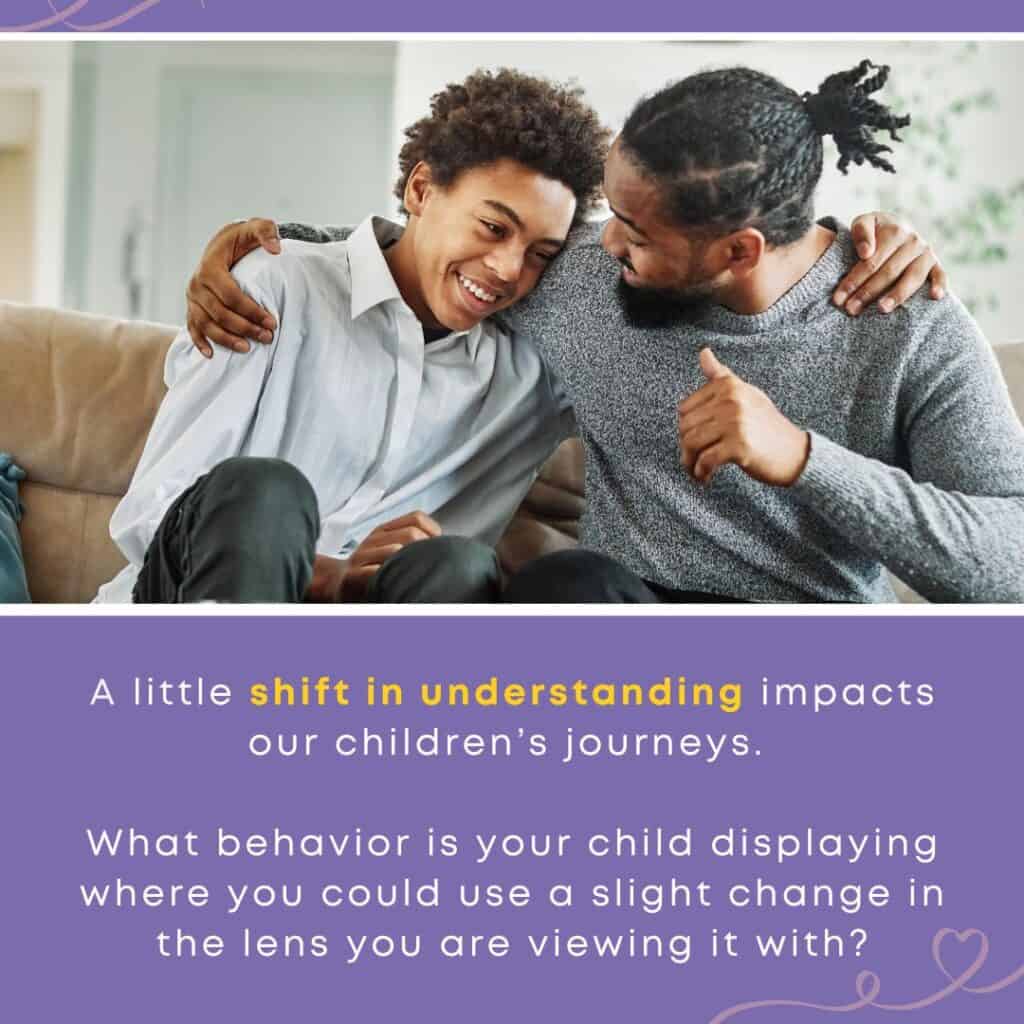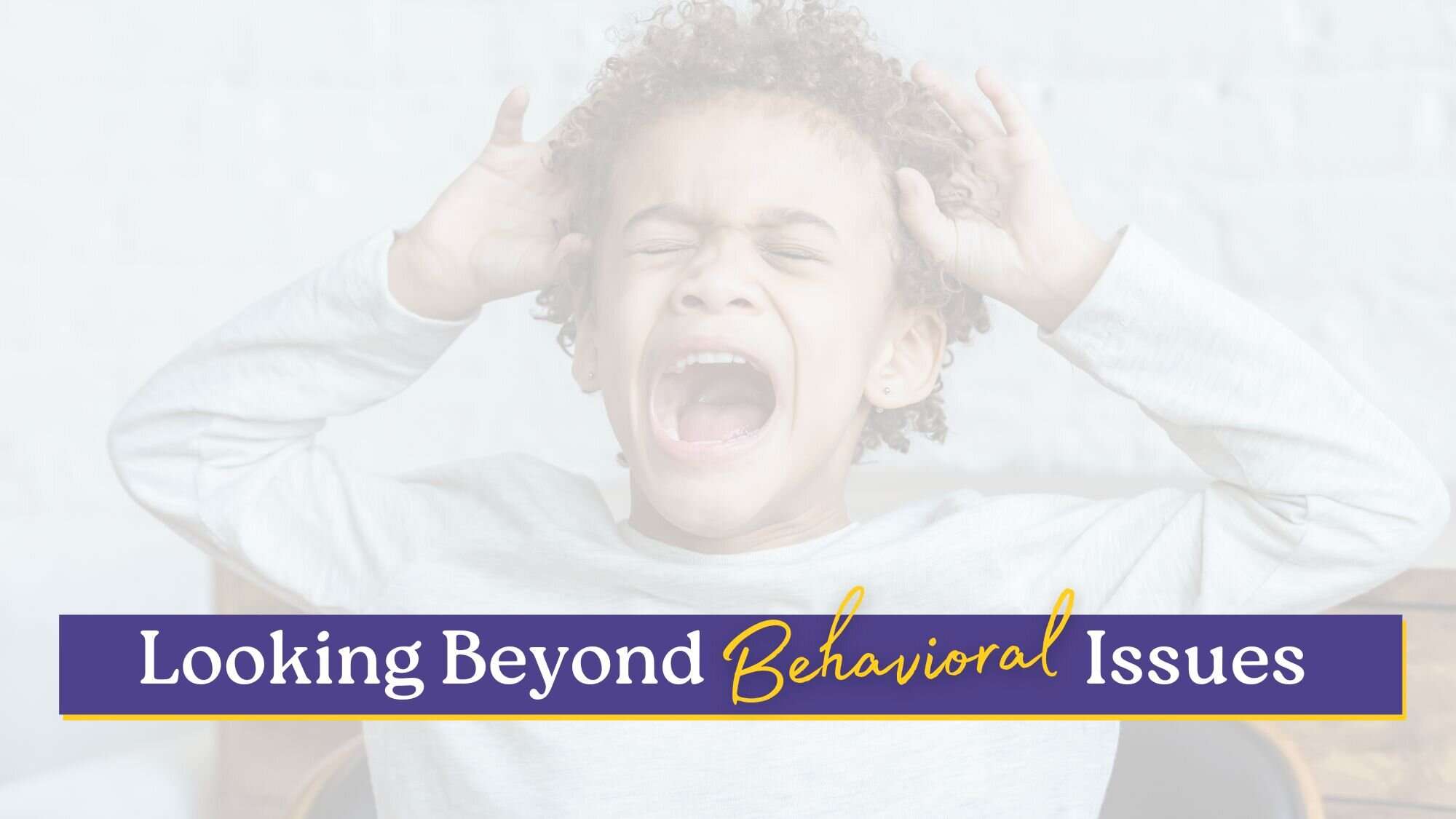Behavioral issues can be incredibly consuming and overwhelming, to say the least! In working with families, I always remind parents that they are not alone in facing these difficulties. These issues, more common than we might realize, unite us in a shared journey. No child wakes up and thinks, “Today, my goal is to create as much chaos as possible.” Or “Today, I wish to be dysregulated, defiant, and manipulative—I truly hope to achieve this!” Even though these are not factual statements, there are days when such sentiments seem almost driven in their quest to disrupt our desire for peace and unity. Remember, you are not alone in this journey.

First and foremost, it’s crucial not to define our kids by their behavioral issues. On some days, or even in some seasons, this is not easy to achieve. Behavior is seen and known, and sometimes, it is so challenging that setting aside moments of much-needed reflection is tough
Behavioral Issues and Underlying Needs
One way to embrace the process is to focus on our observations and the needs underlying the behavior. These needs may manifest as undesirable actions when they arise from unmet requirements in our children’s lives. It is essential to recognize that these needs are not abnormal but are instead a normal part of every child’s development. You are not alone in this understanding.
Common Behavioral Issues and Solutions
Acting Out
Children may act out to gain attention from parents, friends, or teachers, which may stem from feeling overlooked or a desire to be noticed. A simple solution is to spend one-on-one time and say, “You are seen, and I enjoy being with you.” Providing the needed attention shows they are loved and valued.
Seeking Control
Children may try to control their environment with defiance. Kids often crave control when they feel uncertain or powerless. Conversations with some voice or decision-making within the appropriate boundaries can help a child feel safe.
Frustration and anger can sometimes overwhelm kids who struggle to find the verbal skills to express their feelings and needs. Viewing this as a skill they have yet to develop is a valuable starting point. Additionally, leading by modeling appropriate ways to express our feelings and frustrations proves beneficial. I present several practical methods for modeling and teaching your child to express their feelings and frustrations in a healthy manner, such as using simple phrases like “I feel sad because” or “I’m angry because.”
Helping them identify their feelings is a great start! Another effective tool is to engage your child by checking in with their feelings. A helpful method to achieve this is with an “engine plate,” which assists a child in recognizing when their body is running too fast or too slow. You can easily create this using a paper plate: place red on one end, yellow in the middle, and green on the far-right side. Red indicates their body is running too fast, yellow signifies revving up, and green represents optimal. Assisting them in identifying their feelings, especially during optimal times, is incredibly beneficial. This process helps them understand when their bodies and emotions are regulated.
Out of Control Behavior
Out-of-control behavior in public, including meltdowns. Sometimes, environments are too loud, busy, and overstimulating. Knowing what our kids can handle or having actual conversations surrounding our plans could help them put words to this discomfort. Together, we can develop a game plan to assist with some of their coping skills. These skills will serve them well when angry, sad, or frustrated.
Sensory Avoidance and Seeking
Sensory avoidance or seeking behaviors can manifest in various ways. Some kiddos might be sensory seekers, meaning they are moving everywhere, all at once, or into everything! The second sensory challenge could also indicate they are avoidant, steering clear of certain textures and movements, or being sensitive to light or sounds. Recognizing these behaviors can empower you to respond more effectively and supportively, addressing the root causes instead of merely the behavior.
Identifying Undeveloped Skills
Another practical way to help us look beyond behavior is to identify some of our kids’ undeveloped skills. These might include social skills, such as sharing or taking turns; emotional regulation skills, like managing frustration or disappointment; or cognitive skills, like problem-solving or decision-making. After identifying some of these skills, we can create a plan to break down learning the necessary skills into smaller goals to help them progress on their journey. To better determine whether a skill is developed, we must ask ourselves, “Is this something my child won’t do?” or “Is this something my child can’t do?” Sometimes, our expectations are not realistic, which can lead to unnecessary frustrations that are avoidable. When our expectations align with our kids’ abilities and needs, we can best support and encourage them!
Perspective on Behavioral Issues

Our lens, or our perspective, is everything! How we see behavior as unmet needs and undeveloped skills does and should change how we see our kids. When we view their behavior through the lens of unmet needs and undeveloped skills, we see them as kids, as learners, striving to grow with patience and understanding. We also see them as created in the image of God, with a plan and a purpose for their lives, which gives us the privilege of seeing their potential unfold. And sometimes, in the “every day,” we miss and lose sight of such a lens.
Billy’s Story
As we wrap up our time, I’d like to share a story that you can relate to, if you’re like me. I hope it changes us, our hearts, our lens, and perspective.
This is a story about a boy named Billy. Billy always struggled with completing homework. When his mom would sit with him, he would squirm and fidget, and eventually, his homework landed on the floor, stating he wasn’t going to do it. His Mom became frustrated because she thought Billy was lazy and disobedient. Mom needed perspective and help in assisting him. Billy’s Mom was at her wits’ end, so she made an appointment with his teacher. As they met, the teacher shared how Billy struggled with reading comprehension. She mentioned that he became overwhelmed by large amounts of written material and anxious about whether he thought he would fail. This appointment changed everything for Mom.
Instead of viewing Billy as lazy and defiant, she began to see him through the lens of a boy trying to navigate his work but feeling powerless against his challenges. Mom began tackling homework time differently. She created a warm and inviting space. Instead of giving him large reading assignments, she broke them into smaller parts. They began working together, reading aloud and focusing on reading for understanding, not just completion.
Over time, Billy’s confidence grew. His mom’s patience and connection with him allowed him to be more open and share his feelings about school and his anxiety. She provided the necessary support and encouragement. Homework time transformed from a daily dreaded battleground into a collaborative learning environment filled with patience, motivation, and laughter.

A New Outlook
All this changed simply by looking at what Mom saw (his behavior) and looking at it through an unmet need and an underdeveloped skill. Through this lens, their bond was strengthened, creating a more confident learner in Billy. What a powerful reminder that a little shift in understanding impacts our kiddos’ journeys. What behavior is your child displaying where you could use a slight change in the lens you are viewing it with? It will not just change our kids; it will change us.
















